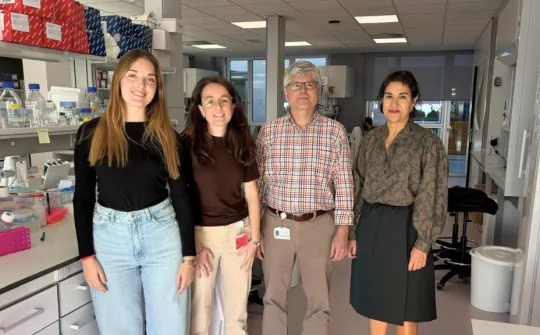
According to data from a study conducted by Francisco Villar of the SJD Barcelona Children’s Hospital, close attention needs to be paid in these cases.
Suicide is one of the main causes of death among adolescents.
The SJD Barcelona Children’s Hospital treats an average of 250 young people each year who are considered to be at a high risk of committing suicide. This includes patients who think about death or suicide, those who have devised a plan for taking their own life and those who have already tried to kill themselves.
Francisco Villar, clinical psychologist and Director of the Suicidal Behaviour Unit in SJD Barcelona Children’s Hospital’s Mental Health Department has studied over 800 cases of minors who have displayed suicidal behaviour and who have been treated in recent years at the centre, in order to determine how the treatment of these young people can be improved to prevent them from attempting suicide again. These studies are part of the doctoral thesis recently presented by the psychologist Francisco Villar at the Autonomous University of Barcelona.
Villar, who works in the Psychiatry and Psychology Department, has classified these young people into three groups. The largest group, representing 60% of the total, is composed of young people who have long-term situational and behavioural problems (inability to adapt, failure at school, family problems, etc.); the second group, representing 30% of the cases, are adolescents who suffer from serious mental health problems; the remaining 10% are young people who, without presenting any mental problems or having given any signs that their life was at risk, try to commit suicide as a response to a stressful event. Out of all the patients who were seen, 9% of the cases tried to commit suicide again within 6 months of being discharged from hospital.
Risk factors in suicide attempts in young people
It is particularly important to pay special attention to those young people who try to commit suicide who have maladaptive personality traits, a family history of mental health problems and a history of self-harm.
Villar was also able to identify some of the risk factors that allow us to recognise those young people who have tried to commit suicide and who have a higher risk of repeating the attempt over the course of the next 6 months. These results are especially useful for the mental health professionals who treat these young people, as they demonstrate the special importance of paying extra attention and taking extra safety measures in the follow-up period after suicide attempts in young people with the following profile:
- Maladaptive personality traits, boys and girls who struggle to manage their emotions and relationships, both with other people and with themselves.
- A family history of mental health problems.
- History or evidence of self-harm.
The results of this investigation show that, contrary to current beliefs, depression is not a predictive factor for subsequent suicide attempts among young people, and appears to be more related to the conception of death than with suicide. This is why, in adolescence, the promotion of treatments aimed at acquiring skills (emotional management, social skills, conflict resolution, etc.) could have a greater impact on the prevention of suicidal behaviours than those aimed at treating depression.



